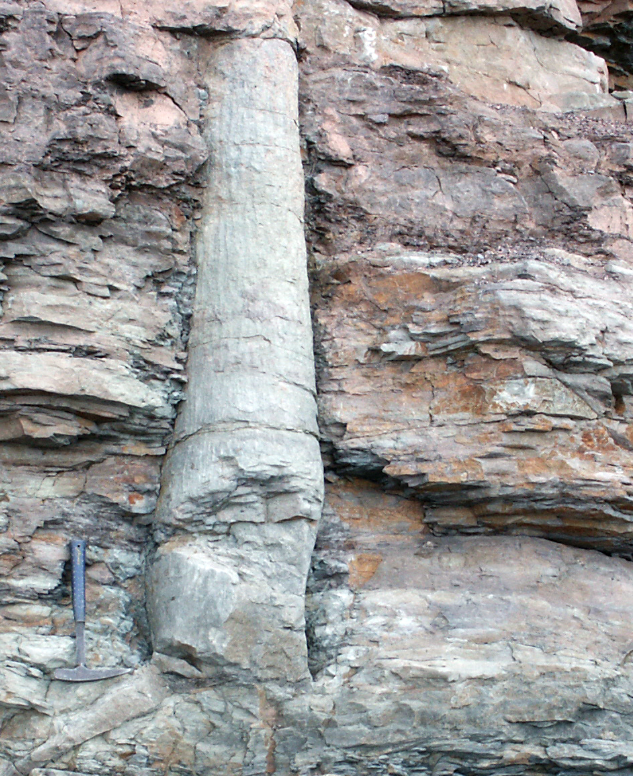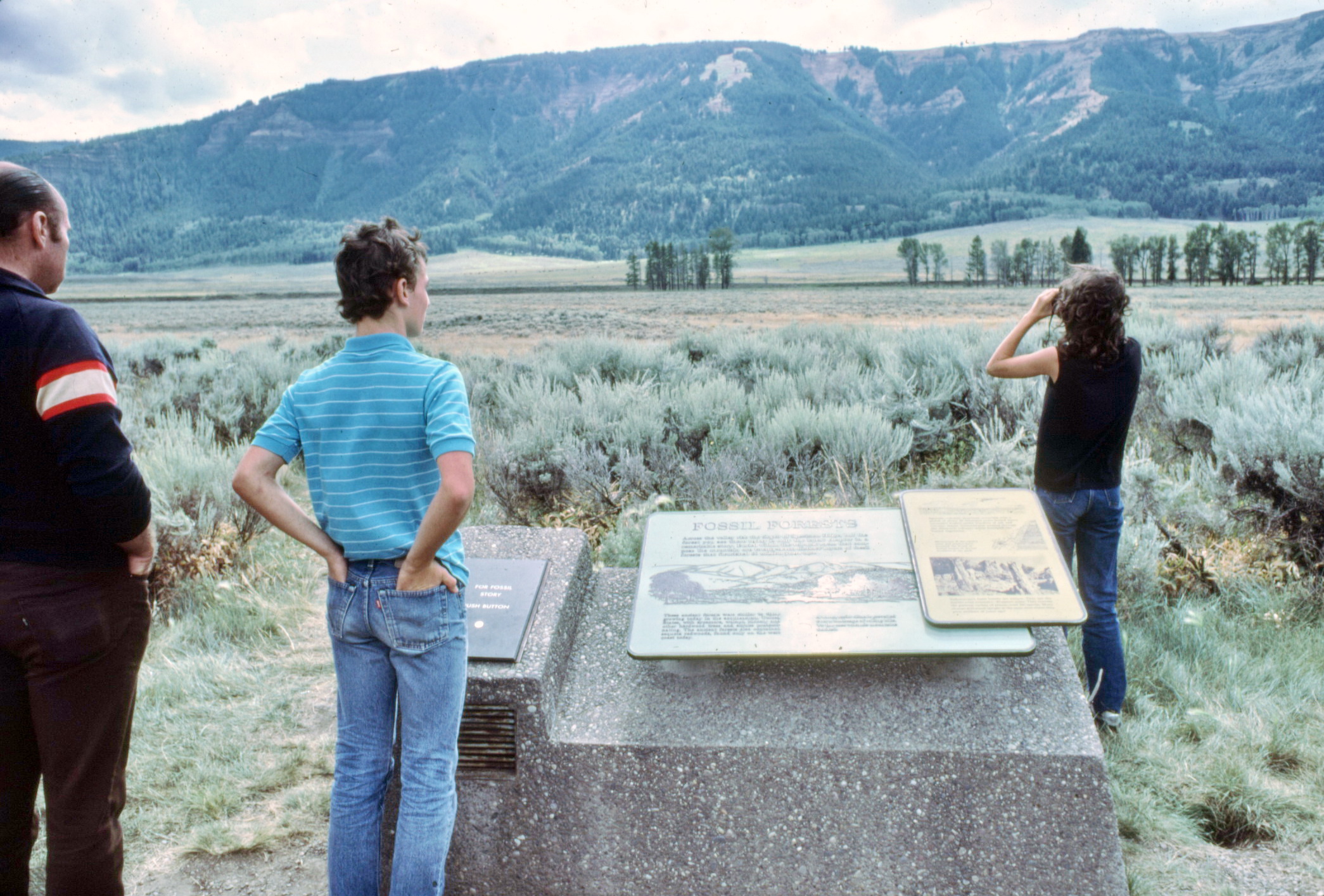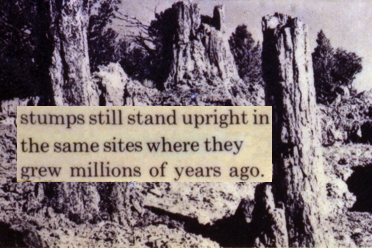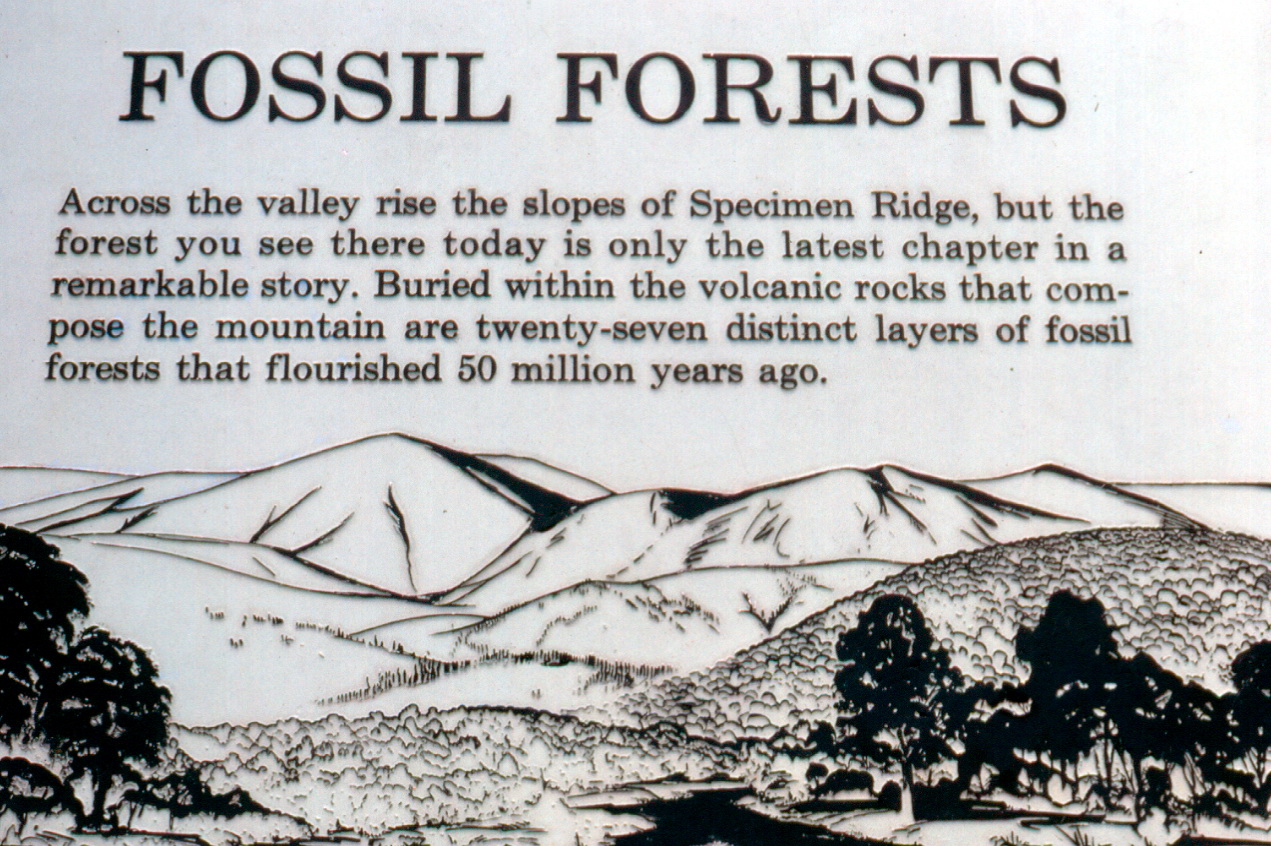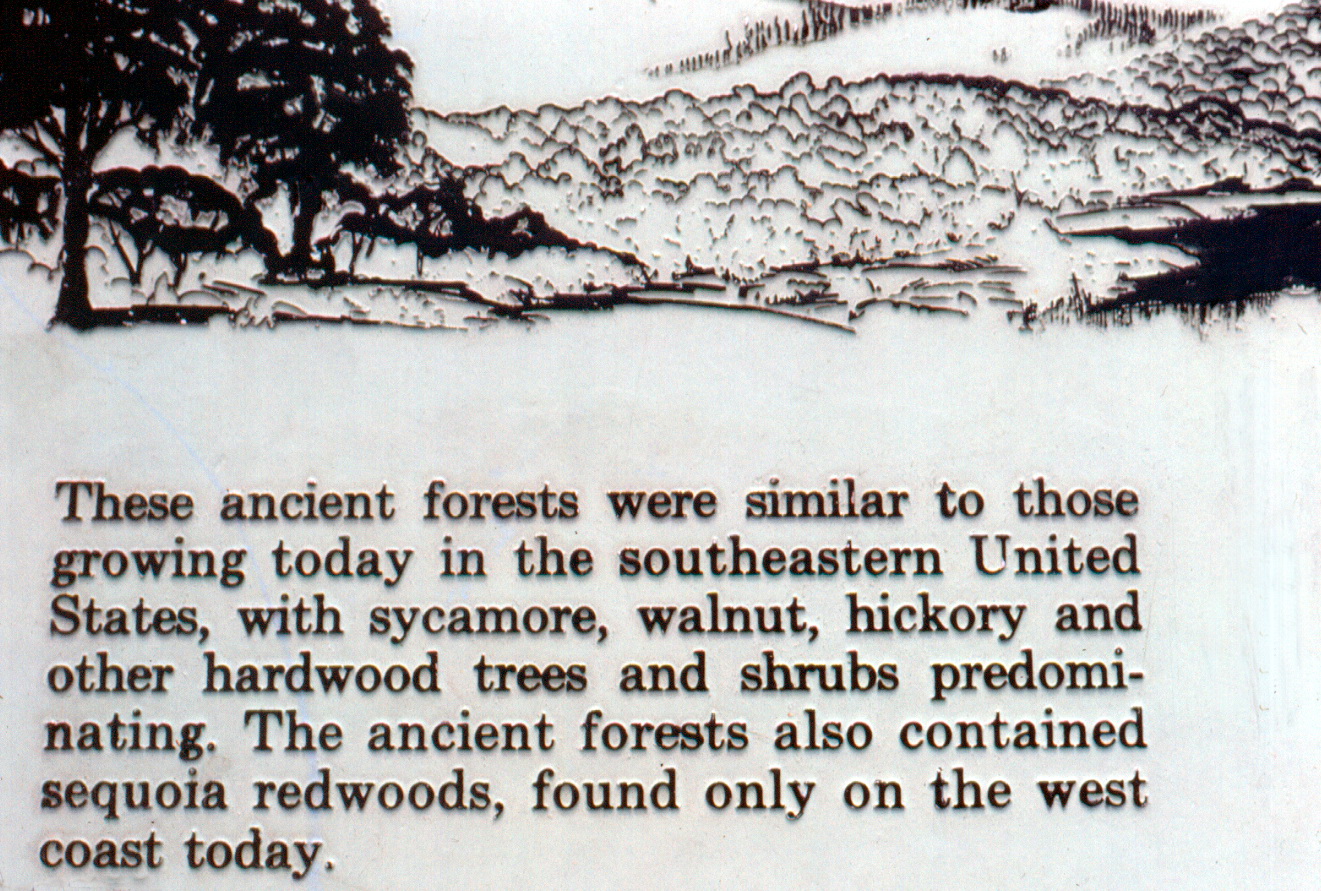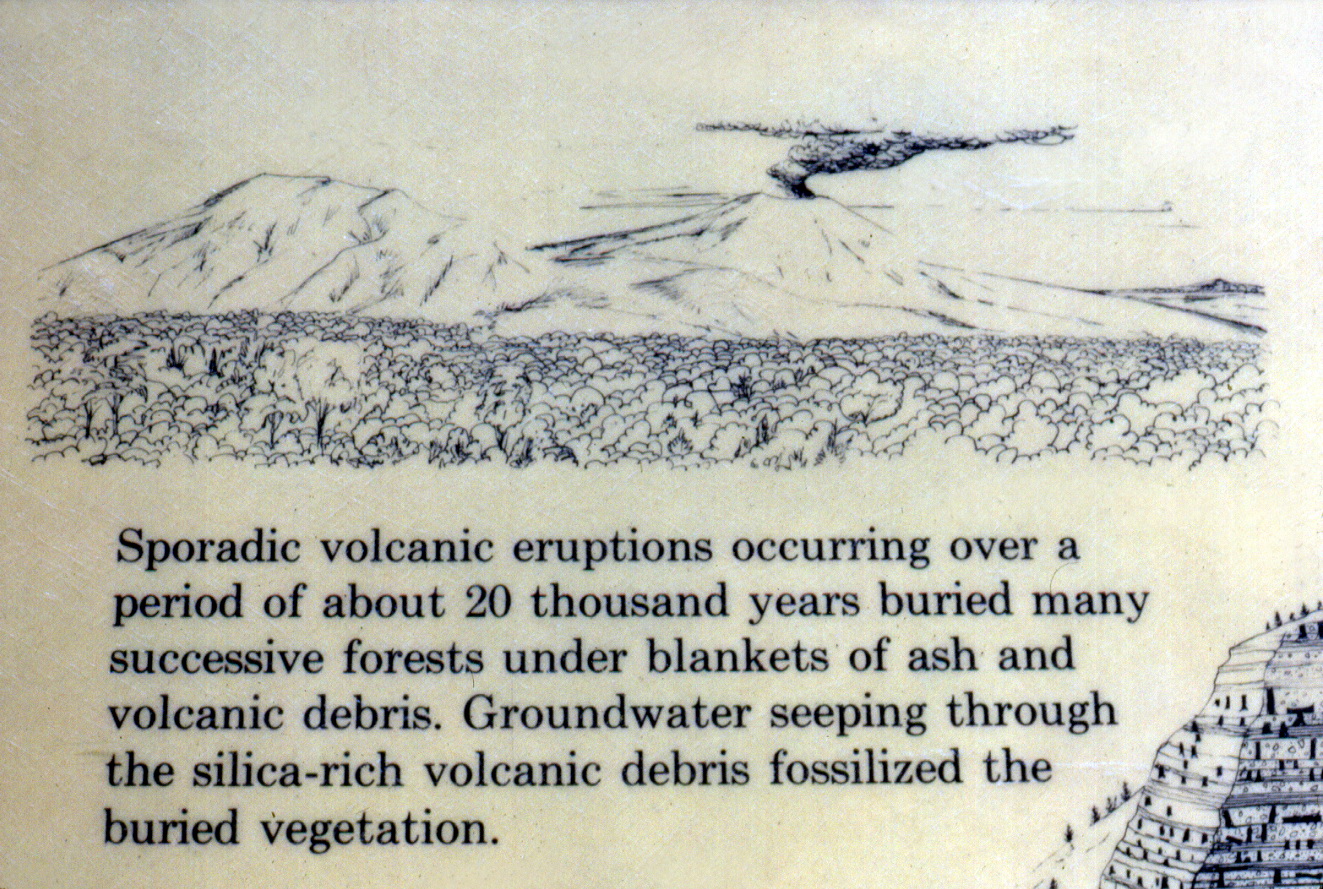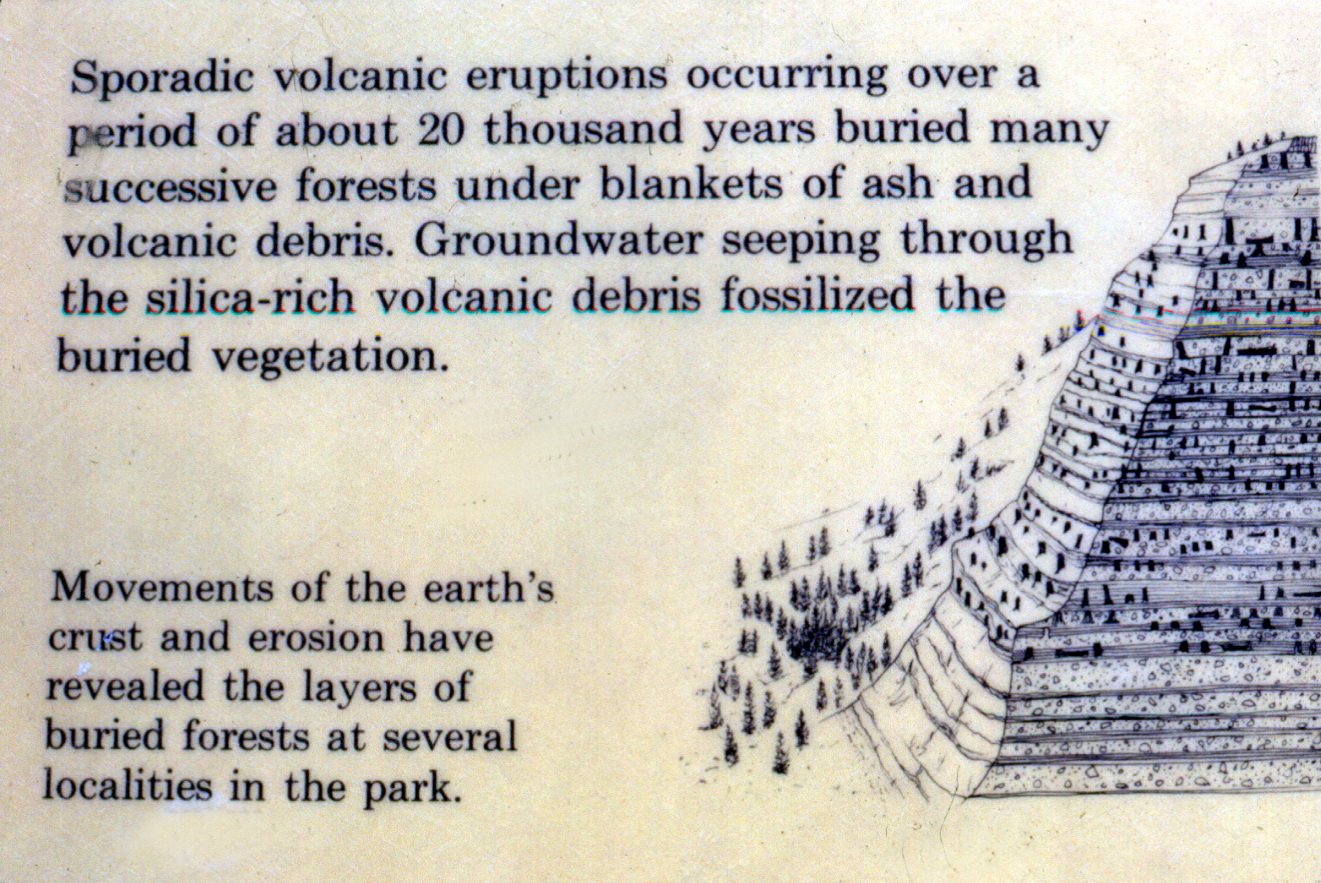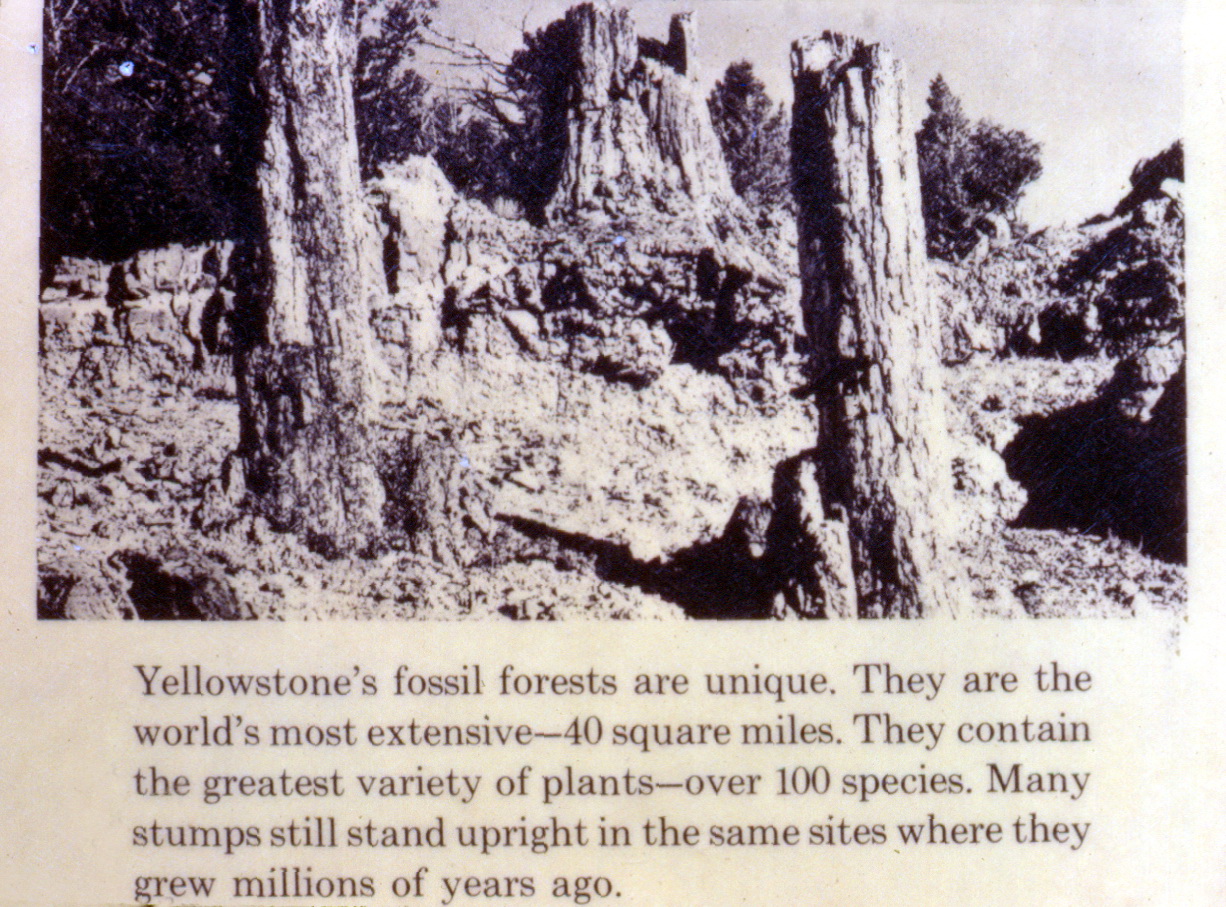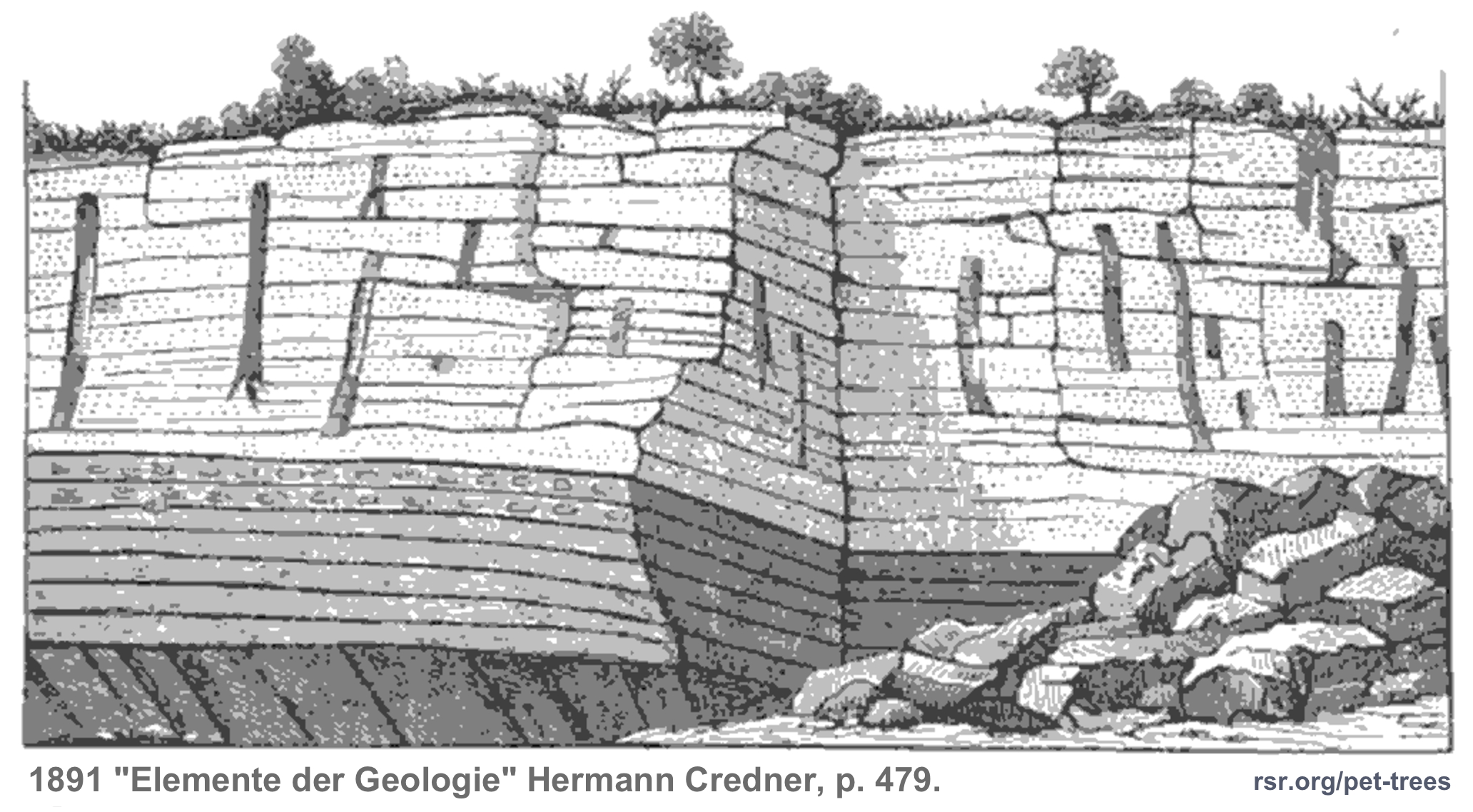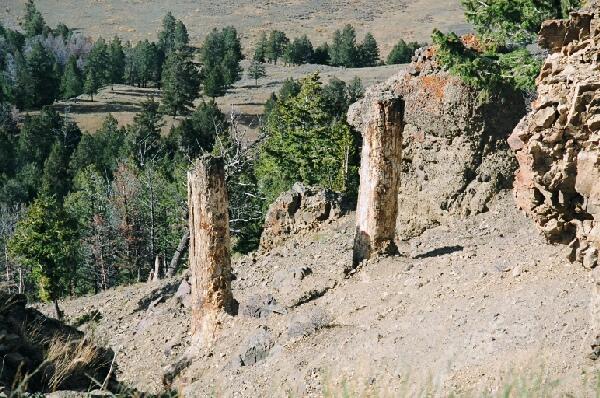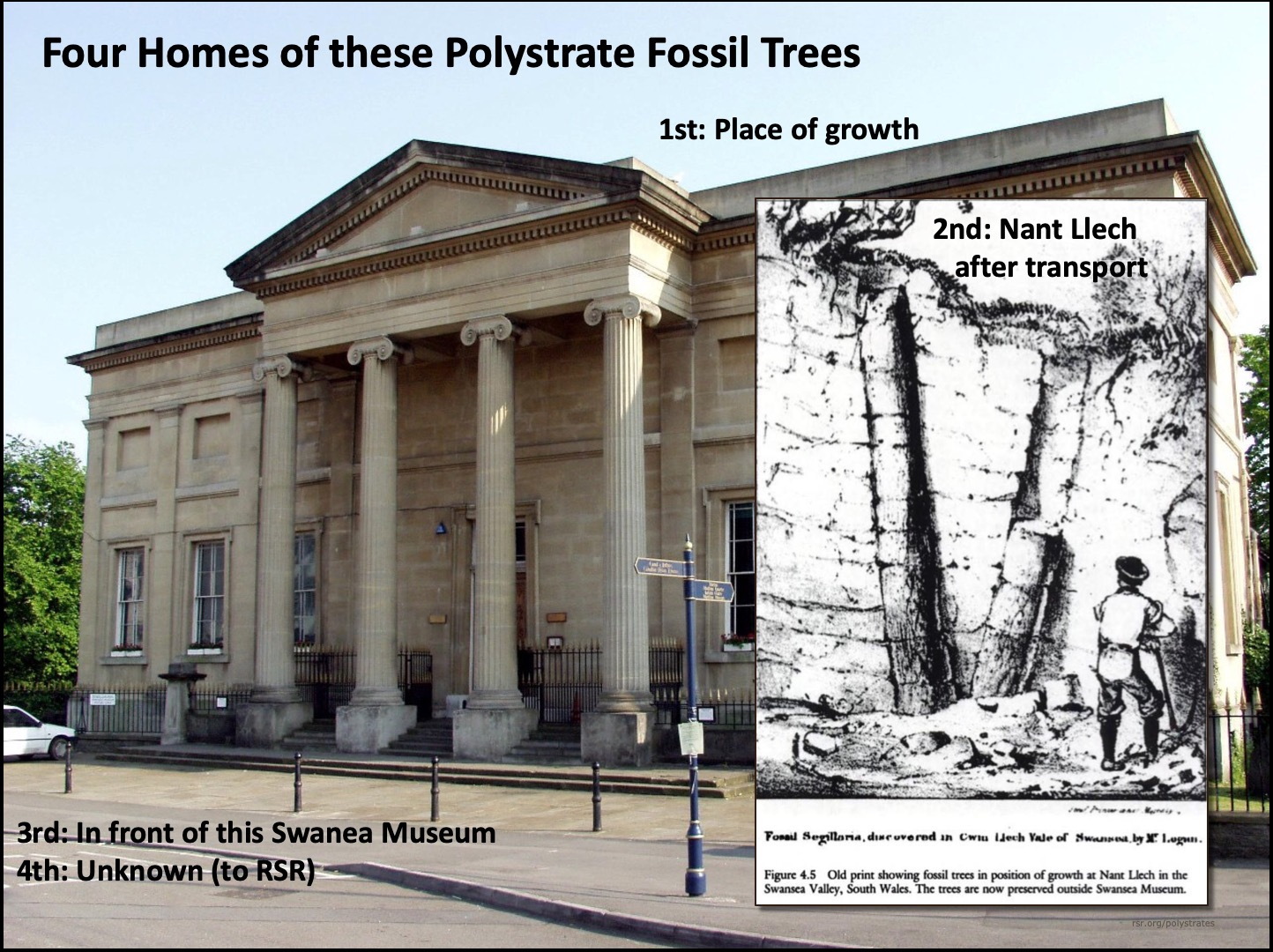* Polystrate Trees: Examples abound around the world of
polystrate trees:
-
Yellowstone's petrified polystrate forest (with the NPS exhibit sign removed;
see below) with successive layers of rootless trees demonstrating the rapid deposition of dozens layers of strata.
- A similarly formed
polystrate fossil forest in France demonstrating the rapid deposition of a dozen strata.
- In many locations, polystrate fossils such as trees span many strata, including famously in the Fossil Cliffs of Joggins, Nova Scotia, which expose sections of 14,000 vertical feet of sedimentary strata, with 49 out of 50 such trees completely lacking their roots, or containing truncated roots, or roots with their rootlets lopped off, indicating that all of these trees were growing elsewhere and transported here in floodwaters.
- These trees lack erosion: Not only should such fossils, generally speaking, not even exist, but polystrates including trees typically show no evidence of erosion increasing with height. All of this powerfully disproves the claim that the layers were deposited slowly over thousands or even a million years. In the experience of your RSR radio hosts, evolutionists commonly respond to this hard evidence with mocking. See also articles in
ICR Impact and at
CRSQ.
* Yellowstone Exhibit:
David Coppedge took these photographs in 1983 in Yellowstone National Park and confirmed to RSR after his 2015 trip that today there are no such signs at Specimen Ridge. Instead, wildlife, etc., exhibits are currently on display there. And near Roosevelt Junction at the fenced-in petrified tree site, the park service presents a sign attributing these tree remains to catastrophic mudflow, which explanation is much closer to reality than their old "successive forests" story. The old, incorrect "Fossil Forest" exhibit claimed that dozens of layers of petrified trees were still standing "where they grew". As explained on Real Science Radio's
List of Not So Old Things program, these trees have no root system and were hydraulically transported to their current location. See
rsr.org/list#yellowstone. [The second photo below is an RSR composite.]
After Bob Enyart's
Trading Genesis theistic evolution presentation (see it
below) in May 2015 in Malibu, California on the Pepperdine University campus, David Coppedge wrote to Bob Enyart at Real Science Radio:
"The book
Roadside Geology of the Yellowstone Country by [
geology professor] William J. Fritz (1985, 6th printing 1994), on pp 25-26, also talks about the change. He says, 'When I visited the Mount St. Helens area shortly after the eruption, it was just like Yellowstone!.... Both the mudflows and the appearance of the trees is identical.' (
p. 25). On page 26, though, he points out differences between the two sites. Nice to meet you in person today [Bob]."
* 1891 Drawing of Similar Polystrate Trees in France: From Hermann Credner's text
Elemente der Geologie,
page 479 on the "Upright trunks in carbon sandstone of St. Etienne in France". (Click image to enlarge.)
*
These Trees Did Not Grow Here: The old-earth biased National Park Service cannot be trusted when it contradicts biblical chronology. For example, creationists worked to correct the NPS' false claim that Yellowstone's petrified trees grew in up to 50 successive forests, each leaving behind one or more individual trees which became petrified, all of this at Specimen Ridge (and Creek).
* Collectively, they form a Polystrate Fossil Forest: Creationists have worked hard to correct the historical record. Yellowstone's petrified trees lack root systems. So, they do not stand where they grew. Instead, they were all deposited during a catastrophic event that was rapidly laying down wet sediments (which lithified into today's strata). These trees, after getting waterlogged and sinking vertically (upright floaters), settled onto what was, at their moment of settling, the topmost layer. They were then soon buried (in days to months; not millennia) by subsequently deposited sediments, and joined by other trees vertically sinking and settling into the successive layers of sediments that were burying the trees that had sunk just days and weeks previously. Thus, the entire system of the fossil forest forms a single polystrate fossil that compresses the formation event from allegedly tens of thousands of years down to mere months. See this also in RSR's 3-minute YouTube video:

